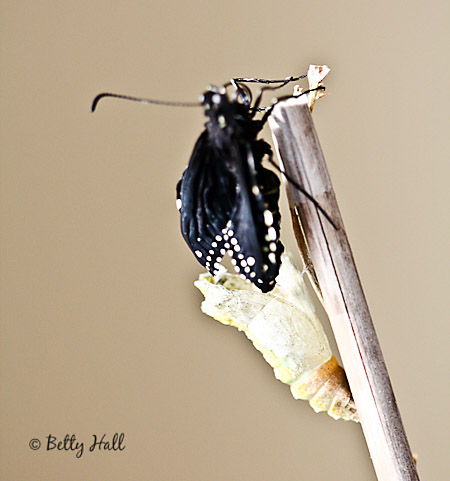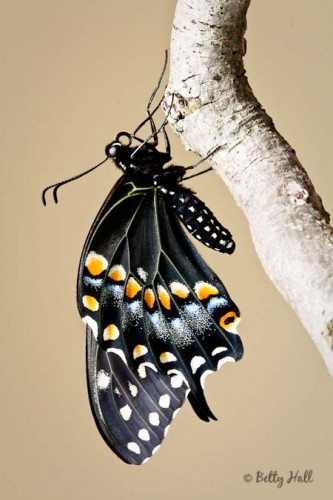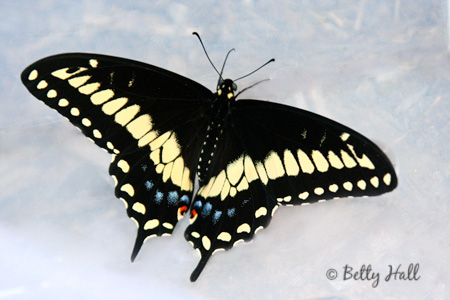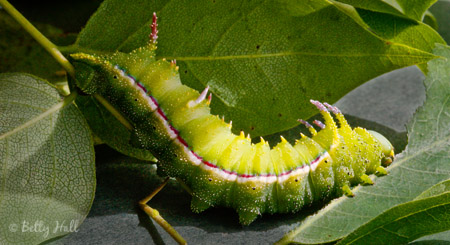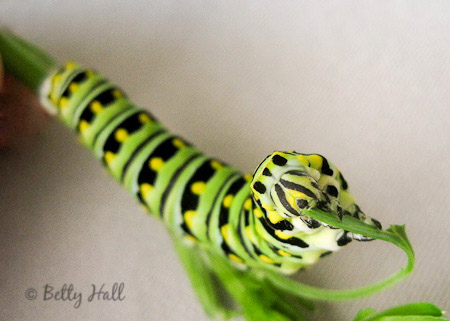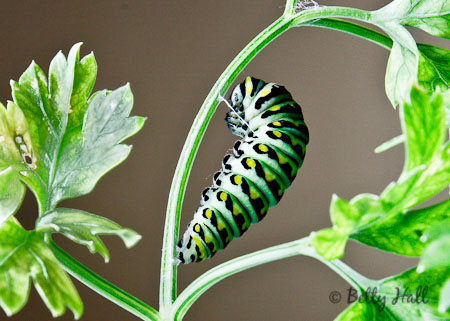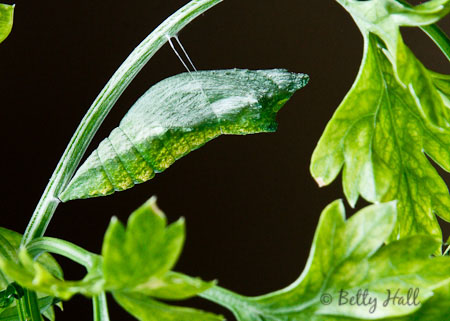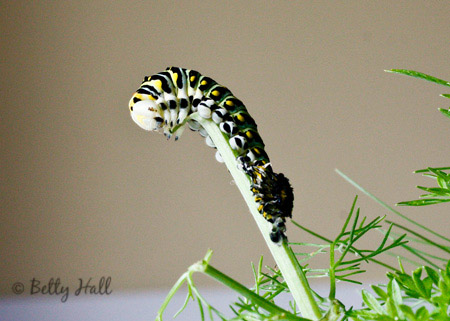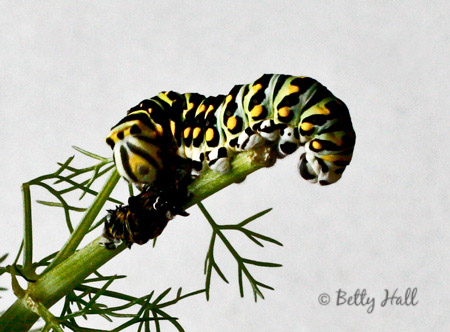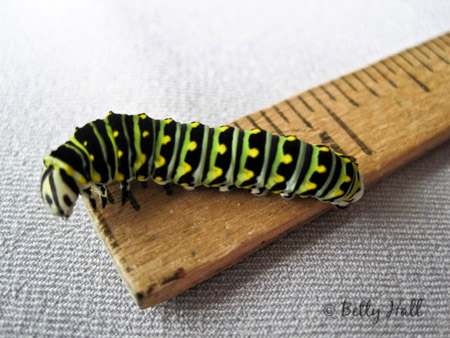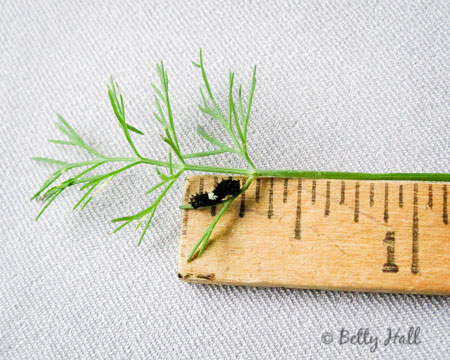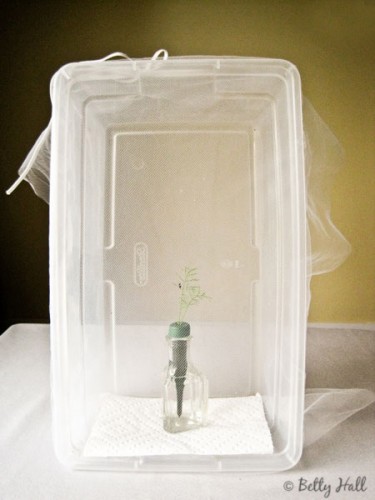As I passed the butterfly cage on Saturday, I happened to notice a small crack in the chrysalis. I quickly grabbed the camera, hoping to catch what I knew was about to happen.
In less than a minute, the black swallowtail butterfly had emerged. The wings were small and crumpled, and the abdomen was very large.
The butterfly gradually pumped fluid from its abdomen into its wings. Within five minutes it looked more normal, however the wings were still too soft for it to fly. It hung upside down while the wings hardened, and within a couple of hours it began to open and close them.
The yellow of the top wings let me know this was a male. Female’s wings have more blue, as in the photograph on my previous swallowtail blog post.
When I took it outside, the butterfly quickly flew away and was soon out of sight.
I’m amazed to think that thirty-two days ago a tiny caterpillar emerged from an egg. That caterpillar quickly grew, made a chrysalis, and this beautiful butterfly emerged. I’m grateful to once again have witnessed this transformation.

